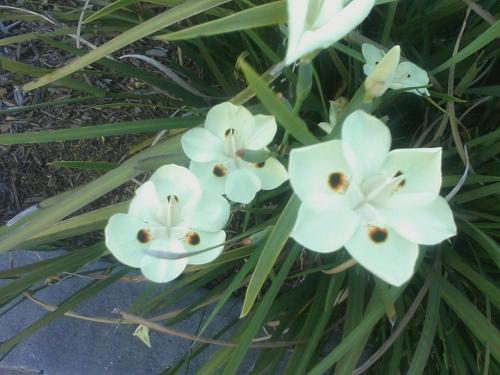My rhubarb really has been around a while! My father’s father’s father and mother grew it quite some time ago, and shared some shoots of it with my father. He then shared it with my maternal grandmother, who shared it with her mother, another of my great grandmothers, who thought it was something really exotic. Along the way, it was undoubtedly shared with friends and neighbors all over the place.
My great grandparents with the original rhubarb also grew old varieties of grapes, oranges, lemons, walnuts and all sorts of vegetables. Their two (‘Carpathian’ English from Persia) walnut trees were remnants from an orchard that was already old before their home was new in 1940.The few ‘ornamental’ features of their garden included such old fashioned but resilient plants as junipers, callas, pelargoniums (geraniums), dahlias and roses. Yes, the stereotypical Italian American garden. My great grandfather even gave me my first nasturtium seeds.My maternal grandfather likewise grew all sorts of traditional vegetables, as well as cherries, peaches, avocados, blackberries and raspberries. My grandmother competed for limited garden space to tend to her many roses, as well as lilacs and bearded iris that she got from her mother. My mother still grows a large herd of the original iris, several lilacs and a copy of the peach tree.My very first experiences with gardening were in the old fashioned but remarkably sustainable gardens of my parents, grandparents and great grandparents. Such gardening with so many old fashioned plants would seem primitive by modern standards, but really demonstrates how sustainable proper horticulture is.Of course, as a horticulturist, I work with all sorts of exotic plants and modern varieties. Although some are fun to work with, the best and most sustainable plants are the old classics and simpler ‘unimproved’ plants, especially those that can be propagated from seed, division or cuttings from established plants.Many modern varieties of plants are more beneficial to the retail nursery industry than to home gardens, since they do not last too long. They are generally either not well suited to local climates, or are genetically weak from extensive breeding or mutation. (Many of the mutant characteristics that some varieties are selected for, such as variegated foliage or compact growth, compromise vigor.) As they come and go, more new plants are needed from nurseries to replace them. This is actually contrary to the sustainability fad that so many nurseries claim to promote.Perhaps our parents know more about gardening and sustainability than we give them credit for.foliage of the week: sea green juniperNo one can deny that junipers are useful, sustainable and resilient. They tolerate cold, heat and harsh exposure. Once established, they do not need much water.Sea green juniper, Juniperus chinensis ‘Sea Green’, is a bit lighter green than more traditional dark green junipers. It can grow somewhat slowly, eventually getting to about five feet tall, and a foot or two wider. Like all junipers, it should never be indiscriminately shorn, but should instead be selectively pruned to exploit its distinctive ‘fountain’ shaped branch structure that points up and outward from the base.







